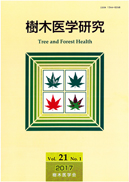Volume 4, Issue 2
Displaying 1-9 of 9 articles from this issue
- |<
- <
- 1
- >
- >|
-
2000Volume 4Issue 2 Pages App1-
Published: September 30, 2000
Released on J-STAGE: February 17, 2021
Download PDF (1809K)
Review
-
2000Volume 4Issue 2 Pages 63-71
Published: September 30, 2000
Released on J-STAGE: September 15, 2020
Download PDF (2390K)
Articles
-
2000Volume 4Issue 2 Pages 73-80
Published: September 30, 2000
Released on J-STAGE: September 15, 2020
Download PDF (1030K) -
2000Volume 4Issue 2 Pages 81-85
Published: September 30, 2000
Released on J-STAGE: September 15, 2020
Download PDF (1043K)
Lecture
-
2000Volume 4Issue 2 Pages 87-92
Published: September 30, 2000
Released on J-STAGE: February 17, 2021
Download PDF (776K)
Topics
-
2000Volume 4Issue 2 Pages 93-94
Published: September 30, 2000
Released on J-STAGE: February 17, 2021
Download PDF (323K)
Science Council of Japan
-
2000Volume 4Issue 2 Pages 95-97
Published: September 30, 2000
Released on J-STAGE: February 17, 2021
Download PDF (580K)
Record
-
2000Volume 4Issue 2 Pages 99-102
Published: September 30, 2000
Released on J-STAGE: February 17, 2021
Download PDF (665K) -
2000Volume 4Issue 2 Pages 103-106
Published: September 30, 2000
Released on J-STAGE: February 17, 2021
Download PDF (1824K)
- |<
- <
- 1
- >
- >|
